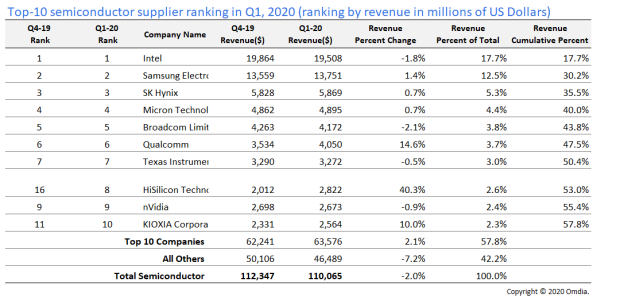Defying a decline in market revenue, the world’s top-10 semiconductor suppliers managed to generate revenue growth of 2.1 percent in the first quarter, as the companies benefitted from a COVID-19-driven increase in PC and server sales.
GLOBALFOUNDRIES to Acquire Land in Malta, NY
GLOBALFOUNDRIES today announced it has secured a purchase option agreement for approximately 66 acres of undeveloped land adjacent to its most advanced manufacturing facility, Fab 8, in Malta, N.Y., near the Luther Forest Technology Campus (LFTC).
NY CREATES Announces New AIM Leadership
NY CREATES (New York Center for Research, Economic Advancement, Technology, Engineering and Science) announce the appointment of Dr. Michael J. Cumbo as Chief Executive Officer (CEO) for the American Institute for Manufacturing Integrated Photonics (AIM Photonics), a program of NY CREATES, effective July 6, 2020.
Improved Quality Control for Steel Manufacturers
Olympus, a leading manufacturer of industrial microscopes, is improving the efficiency of nonmetallic inclusion analysis for steel manufacturers who use OLYMPUS Stream image analysis software.
Semtech Announces Production of New Tri-Edge, a PAM4 CDR Platform for 200G and 400G Data Center Applications
Semtech Corporation (Nasdaq: SMTC), a leading supplier of high performance analog and mixed-signal semiconductors and advanced algorithms, today announced production availability of GN2558 and GN2559, Semtech’s Tri-Edge CDR SR solutions to enable next-generation data center multi-mode interconnectivity.
New SEMI-NBMC, GE Research Project to Advance Vital Signs Monitoring of Patients During Emergency Air Transport
Nano-Bio Materials Consortium (NBMC), a SEMI Strategic Association Partner, today launched a project with GE Research to develop a medical-grade wireless patch that monitors the vital signs of medical patients during emergency air transport.
CEA-Leti Scientists Demonstrate CMOS Device Fabrication at 500°C, Paving the Way to High-Performance 3D Monolithic CMOS Integration
In an FDSOI CMOS processing breakthrough, CEA-Leti scientists have pushed fabrication thermal-process boundaries down to 500°C for CMOS integration, while showing strong performance gains especially in P-type metal-oxide-semiconductor (PMOS) logic devices.
SEMI Virtual Summit Focuses on Microtechnology-Enabled Solutions to Healthcare Challenges
The latest healthtech innovations driven by microelectronics will be presented at the SEMI Virtual Healthtech Summit, Europe’s first online event to explore the critical role of semiconductors in solving the world’s most pressing healthcare challenges including COVID-19. Registration is open for the July 16, 2020, summit.
Measuring a Tiny Quasiparticle Is a Major Step Forward for Semiconductor Technology
A team of researchers led by Sufei Shi, an assistant professor of chemical and biological engineering at Rensselaer Polytechnic Institute, has uncovered new information about the mass of individual components that make up a promising quasiparticle, known as an exciton, that could play a critical role in future applications for quantum computing, improved memory storage, and more efficient energy conversion.
North American Semiconductor Equipment Industry Posts May 2020 Billings
North America-based manufacturers of semiconductor equipment posted $2.35 billion in billings worldwide in May 2020 (three-month average basis), according to the May Equipment Market Data Subscription (EMDS) Billings Report published by SEMI.
